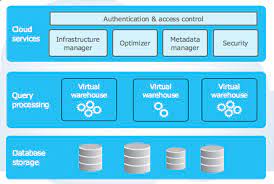Implementing load balancing and parallel processing in Oracle Data Integrator (ODI) involves configuring agent groups, assigning agents to tasks, and leveraging parallel execution features. Here’s a step-by-step guide to implementing load balancing and parallel processing in ODI:
- Agent Groups:
- Agent groups are logical collections of agents that can be used for load balancing and parallel execution.
- Define agent groups based on your environment’s requirements, such as by server capacity or geographic location.
- In ODI Studio, navigate to the Topology Manager and select the “Agent” tab.
- Right-click on “Agent Groups” and choose “New Agent Group” to create a new group.
- Specify the group name and description, and add agents to the group by selecting them from the available agents.
- Load Balancing Configuration:
- Load balancing allows ODI to distribute workloads across multiple agents within an agent group.
- In the Topology Manager, select the “Load Balancing” tab under the agent group configuration.
- Choose a load balancing algorithm that suits your requirements, such as round-robin, random, or agent with the least load.
- Adjust any additional load balancing parameters, if applicable.
- Parallel Execution Settings:
- ODI provides options for parallel execution at various levels, such as mappings, packages, or scenarios.
- Configure parallel execution settings based on the specific components you want to parallelize.
- In ODI Studio, open the mapping, package, or scenario you want to configure for parallel execution.
- Navigate to the “Execution” tab and locate the parallel execution settings.
- Enable parallel execution and specify the degree of parallelism, which determines the number of threads or processes that can run concurrently.
- Assigning Agents:
- Assign agents to specific tasks or components to control their execution and parallelism.
- In ODI Studio, open the mapping, package, or scenario you want to assign agents to.
- Navigate to the “Execution” tab and locate the agent assignment settings.
- Choose the agent group or specific agents to handle the execution of the component.
- Assign agents based on workload distribution, server capacity, or any other relevant criteria.
- Testing and Monitoring:
- Once the load balancing and parallel processing configuration is in place, test the setup thoroughly.
- Execute mappings, packages, or scenarios and monitor the execution in the Operator Navigator.
- Observe the distribution of workloads across agents, the execution progress, and performance improvements.
- Analyze execution logs, statistics, and any error messages to identify potential issues or bottlenecks.
- Adjusting Configuration:
- Based on performance analysis and monitoring results, fine-tune the load balancing and parallel execution configuration as needed.
- Modify the agent groups, load balancing settings, or parallel execution parameters to optimize performance.
- Consider adjusting the degree of parallelism, agent assignments, or load balancing algorithms based on workload characteristics and system resources.
By implementing load balancing and parallel processing in ODI, you can distribute workloads across multiple agents, optimize resource utilization, and improve overall performance and scalability. It’s important to carefully plan and test the configuration in your specific environment and monitor the system’s behavior to ensure optimal results.
SHARE
